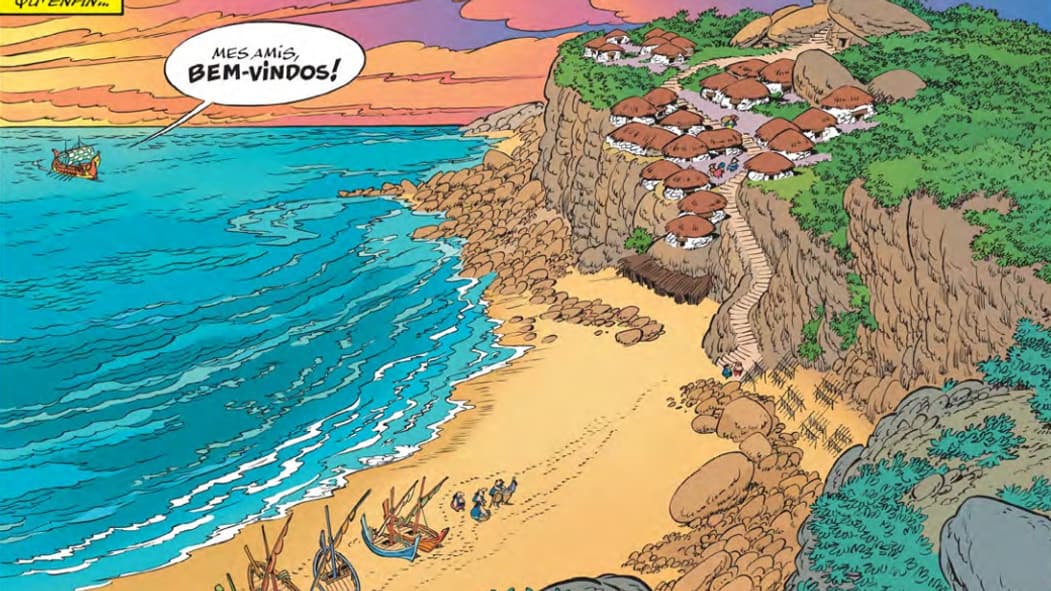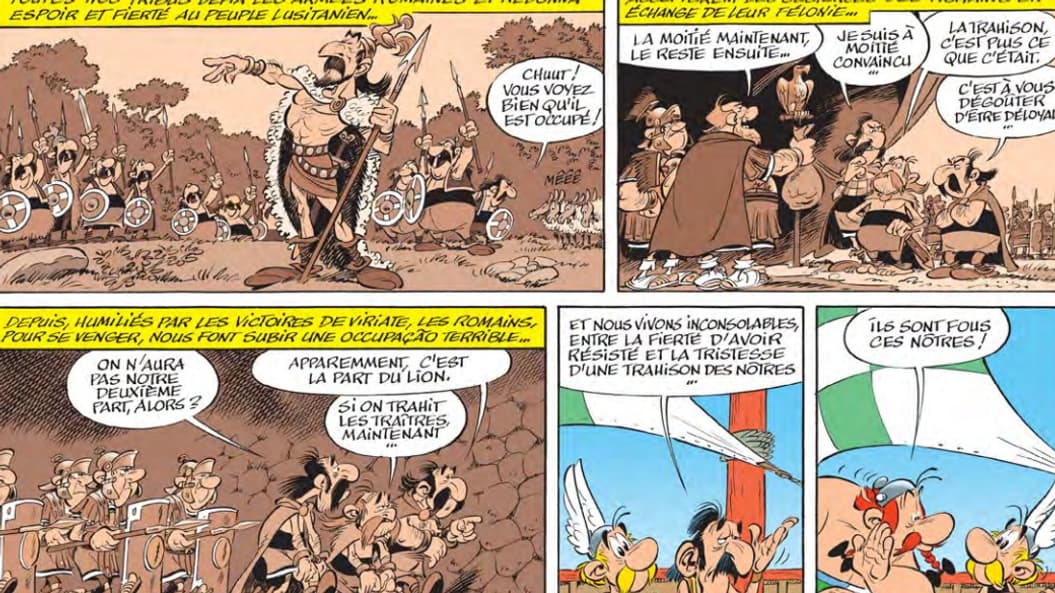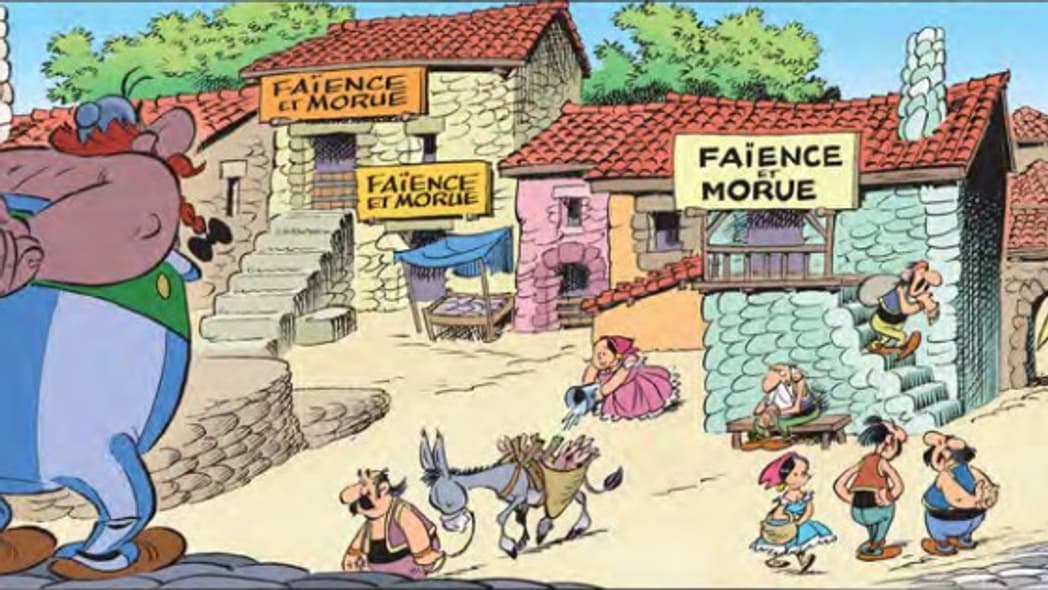The next album of the adventures of Asterix and Obelix, we know, will have a bacalhau flavor. The two Gauls, returning to bookstores on October 23, will disembark on the green coast of Lusitania and stroll through the steep, cobbled streets of Lisbon. Asterix in Lusitania, is the second time written and drawn by the Fabcaro and Didier Conrad tandem. After an album in Gaul in 2023, The white irisHere you have a travel album.
• Lusitania
Finding a destination for Asterix and Obelix is not easy. “You have to find a country that people know. You have to be able to stylize it, to be able to recognize it and have a clear idea of what it is, and there are not many countries like that,” says Didier Conrad on BFMTV. Especially since the Gauls had already inspected many countries.
“Destiny,” Fabcaro explained last March to BFMTV, “took itself in naturally.” “It happened pretty quickly. I wanted the sun, a sunny country. I felt like I had a great idea. Then they told me they’d been thinking about it for a long time! They seemed happy that someone finally wanted to try it!”
In March 2024, the author and Céleste Surugue, general director of Albert René editions, traveled to Portugal to explore.
“We really came out of this trip saying to ourselves ‘there is a very welcoming, very colorful, very bright side’ and we wanted to find that at the top of the album, confides Céleste Surugue. Before opening the album, we know that we are in a place where we feel good.”
• Set the stage
It was up to Didier Conrad to represent the country. “Fortunately I had already been to Portugal once, so I had already felt the atmosphere.” Thus, Lusitania is much greener than Hispania with its more arid climate, described in Asterix in Hispania (1969).
“We also have magnificent and colorful cities that allow you to vary the decoration,” explains Fabcaro.

And then there is Portuguese craftsmanship. If the Gauls have their menhirs, the Lusitanians have their ornamental tiles, their tiles and their cobbled streets.
• New characters
Who says new adventure and new country, says new friends and new enemies. Let’s start with the villains of this album. We see him, on the cover, hidden behind a pillar, Pirepès is a character of the lineage of Tullius Détritus in the discord.
This vile character is accompanied by a centurion named Nouvelopus, who looks like Ricky Gervais. The British actor thus joins the great gallery of personalities sketched and caricatured in the Asterix albums, from Sean Connery to Pierre Tchernia, including Johnny Hallyday.
To draw the Lusitanians, designer Didier Conrad was inspired by a Lusitanian character who appears in The domain of the gods in 1971, as explained in the press dossier.
“Goscinny and Uderzo had already laid the foundations for the physical appearance of the Lusitanians because the first appears in The domain of the gods. “It was he who served as my guide to Solilès and Pataquès, two Lusitanian runners who appear in ‘Asterix and la Transitalique’.”
For the Lusitanians, however, there were no models. “I was inspired by popular Portuguese representations (statues, paintings, dolls, etc.) and adapted the costumes to Antiquity, but also to the visual universe of Asterix.”
• The names of the Lusitanians
The Gauls have names in ix, the Romans in us, the Normans in af, the Goths in ic… What ending would the Lusitanians inherit? “We have to return to Jean-Yves Ferri (editor’s note who wrote five Asterix albums before Fabcaro) what belongs to Jean-Yves Ferri, it was he who put it in the Transitalique, I had foreseen that it would eventually end, so I kept it. The little Lusitano we see at the beginning is called Boulequiès, for example,” explains Fabcaro.
• The Lusitanian soul
Each town visited has a strong identity in the Asterix albums. The Spaniard is proud, the Helvetian is clean, the Norman is brave… A character trait had to be found to define the Lusitanian. It’s “saudade.”
“Saudade is a kind of melancholy, of fatalism,” Fabcaro emphasizes at the BFMTV microphone. “It was a challenge to do something a little melancholic, to turn it into a comedy stunt.”
It is to a certain Viriate that Fabcaro attributes the beginning of saudade. “Viriate is a bit like the Lusitanian Vercingetorix. Viriate was betrayed by his own people, and I attributed the genesis of the saudade to the betrayal from which the Lusitanians never really recovered.”

Like Goscinny and Uderzo, Fabcaro and Didier Conrad handle humor with kindness. As Céleste Surugue pointed out last September on BFMTV: “We have fun with the stereotypes, but it is always benevolent. It is a wandering with many smiles and a lot of tenderness.”
Source: BFM TV



